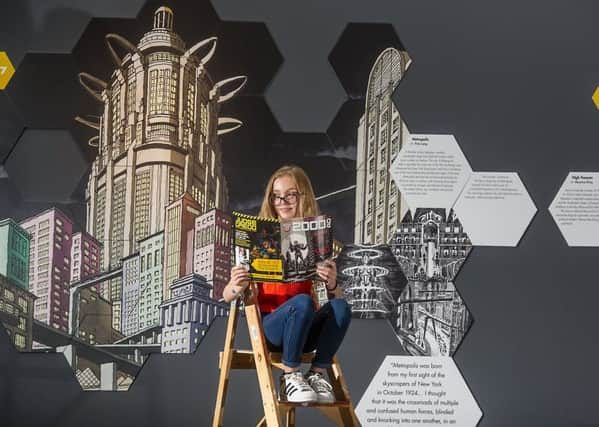Adventures in Space traces sci-fi's evolution in Glasgow exhibition


From the classic novels of HG Wells and Jules Verne to the blockbuster Doctor Who, Star Wars and Star Trek franchises, science fiction has held an enduring fascination.
Now the full story of the genre which gave birth to Flash Gordon, Planet of the Apes, War of the Worlds, Close Encounters of the Third Kind and The Terminator is being told for the first time in a major new exhibition in Scotland.
Advertisement
Hide AdAdventures in Space, which is running in Glasgow for the next four months, traces the evolution of sci-fi from the publication of Mary Shelley’s Frankenstein in 1818 to recent hit films like Gravity, Interstellar and The Martian.
More than 180 new works of art inspired by iconic images from science fiction works and the worlds they inhabited have been specially commissioned for the show, which is said to be biggest of its kind to date.
Artists Ian Stuart Campbell, Douglas Prince, Ciana Pullen and Piotr Sell have created their own tributes to the art and architecture featured in sci-fi novels, comic books, films and television shows.
The exhibition explores the origins of comic book characters like Buck Rogers and Dan Dare and recalls the “golden age” of sci-fi in the 1950s, which spawned the likes of It Came From Outer Space, Day of the Triffids, Them, and Invasion of the Body Snatchers.
The influence of science fiction on everything from James Bond films to Woody Allen movies is recalled, while the show also explores the modern-day sci-fi boom, from the mid-1990s revival triggered by the X-Files to the recent reboots of Star Trek and Star Wars.
Iconic scenes recreated for the exhibition are the moonlit bike ride from the finale of E.T. The Extra Terrestrial, the destruction of the White House in Independence Day, and the arrival of the “mothership” in Close Encounters of the Third Kind.
Advertisement
Hide AdStaged as part of the first nationwide Festival of Architecture, the exhibition will explore how the settings of sci-fi works have drawn inspiration from the emerging towns and cities of their time, and how iconic films went on to influence real-life designs.
The show, curated by designer Jon Jardine, explores the impact and influence of ground-breaking films like Metropolis, Forbidden Planet, Blade Runner, Tron and Planet of the Apes. It will also offer the chance to compare the ideas of architects such as Buckminster Fuller, Frank Lloyd Wright and Charles-Edouard Jeanneret-Gris – better known as “Le Corbusier” – with science fiction visionaries suchy as Philip K Dick, George Orwell, Douglas Adams, Stanley Kubrick, Steven Spielberg and Ridley Scott.
Advertisement
Hide AdNeil Baxter, secretary of the Royal Incorporation of Architects in Scotland, which is staging the exhibition at The Lighthouse, said: “There have been science fiction exhibitions before, but we believe this is the first exploration of the whole genre.
“The idea is to trace the whole chronology of science fiction and then interconnect it with the evolution of architecture. It’s not a big architectural show, but it’s full of architectural content. The evolution of architecture affected sci-fi movies, but the cross-fertilisation happened in both directions.”